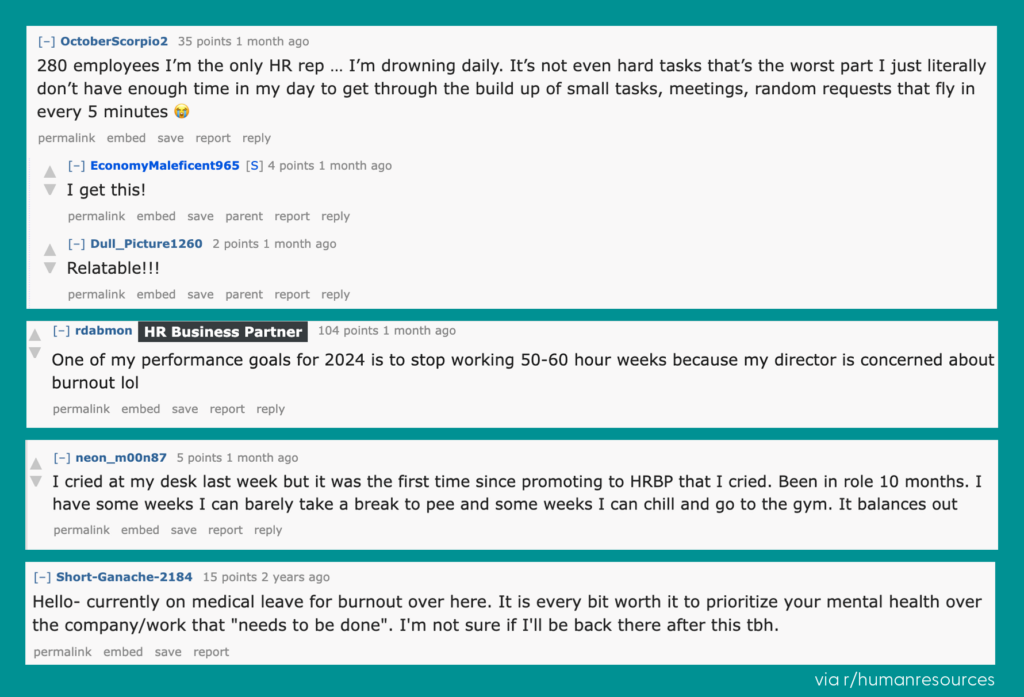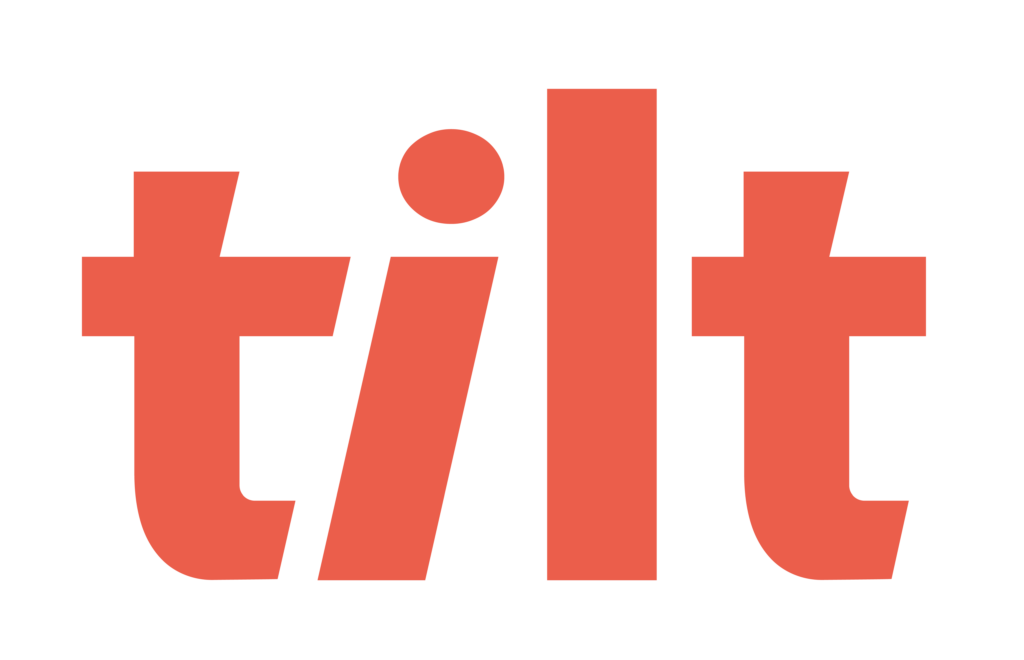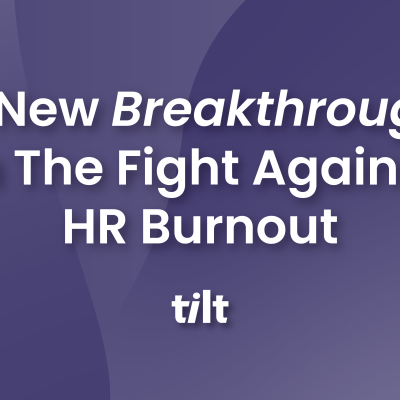We don’t need to tell you, of all people, that HR burnout has been running rampant and unchecked for far too long.
But if you’re reading this, all hope is not lost (and here’s a virtual hug on our behalf).
On top of your core responsibilities like general employee support, attracting and onboarding new hires, leave of absence management, and driving strategic initiatives forward, HR and People Ops pros have recently found themselves playing the role of impromptu therapist, pep rally motivator, and wise sage, all in an effort to uphold organizational morale.
But wait…there’s more.
With HR leaders now emerging as a primary resource for senior executives seeking solutions to their organizations’ toughest challenges, HR teams have also assumed responsibility for an ever-expanding array of today’s pressing matters.
These new pressing matters range from having to navigate hybrid work arrangements and implementing return-to-office policies, to tackling talent acquisition for remote workforces in a particularly demanding labor market.
Of course, as is tradition, we tend to overlook how the people doing all the helping are feeling. Spoiler alert: HR needs some (read: a massive amount of) help.
Perhaps that’s why according to this year’s The Changing Face of HR Report by Sage:
62% of HR professionals say: “I’m considering leaving HR”
81% of HR professionals say: “I am personally burnt out”
84% of HR professionals say: “I regularly feel stressed”
91% of HR professionals say: “The last couple of years have been challenging”
95% of HR professionals say: “HR is too much work”
Tilt Recap – HR is being asked to do more than ever in an environment that’s changing faster than ever. The result of this is the professionals with the biggest impact on organizational burnout are experiencing unprecedented burnout themselves.
Is HR Being Asked to Do Too Much?
Yes. 100%. Way too much. Undoubtedly.
In fact, here is what HR professionals are saying about their current workload (courtesy of r/humanresources):

Can you relate?
In an effort to not unearth more workload trauma, we’ll instead reveal how modern HR leaders are learning to take a massive load off of their team’s plate to reduce stress and overwhelming feelings of frustration.
How HR Burnout Can Be Alleviated
In the same way that ping pong tables and breakroom kegs won’t cure a toxic work culture, taking screen breaks or long walks in the sunshine can be helpful for a temporary mood boost, but won’t help in making foundational changes to an HR professional’s day-to-day stress levels.
That’s not to say that setting healthy work-life boundaries and taking time out of your day to get fresh air and move your body aren’t phenomenal ways to reduce stress. In fact, these are regular practices you should implement even when your burnout subsides, but when 95% of HR professionals say they simply have too much work to do, it’s time to evaluate what processes can be made more efficient or taken off your plate entirely.
One of the least efficient (which is saying a lot) and most frustrating processes contributing to HR burnout today is leave of absence management. From determining FMLA eligibility to answering employee questions about leave policies to navigating complex state benefit programs to simply monitoring and tracking leave data all while being compliant, a single email requesting a leave can be enough to send an HR professional spiraling.

Step 1 for alleviating burnout: Audit your current leave of absence processes and systems and seek to remove what isn’t effectively serving your needs.
The old way of managing leaves of absence was never tenable, yet as our workforces disperse, leave laws transform, and leave requests rise, HR is feeling the frustration of friction caused by outdated systems that simply can’t keep up with modern times.
This means more effort than HR has available spent on administrative tasks and less time spent on strategic initiatives that move both the organizational and morale meters.
Step 2 for alleviating burnout: Identify a leave of absence management solution that acts as an extension of your HR team by automating the administration of your leaves while delivering 1-1 human support to your employees.
A modern leave of absence solution is the HR burnout breakthrough that does more than paper over the symptoms of stress, frustration and mental fatigue. But not all solutions are created equal so it’s important that when vetting a leave solution you don’t end up like u/obsoleteforce above where your “partner” in managing leaves isn’t actually making HR’s life any easier.
Tilt Recap: In order to alleviate burnout, HR must audit processes and systems that are sources of friction and frustration. Most teams are stuck managing leaves of absence in a way that causes tremendous stress and administrative burden, where even antiquated leave administrative methods intended to solve the problem are counterproductive to business success, strategic initiatives, and can actually contribute to the burnout problem.
A Better Leave Experience Is a Benefit to Everyone
Tilt’s approach to leave of absence management is the only solution to alleviate the administrative stresses HR faces when a leave request pops. Tilt supports employees throughout the entire leave journey, all while delivering 1-1 human support to an employee population in their time of need.
Acting as an extension of HR, Tilt’s software compliantly delivers process efficiency for HR’s most complex and intricate tasks at scale. Better yet, Tilt administers and manages all leave types across all states, and does so at scale.
As a fully remote company operating in over 20 states Tilt has saved us so much time in research, compliance, employee conversations, and payroll calculations. Instead of balancing these activities with other responsibilities, we can focus on more strategic and culture-building initiatives!
Allie Morton, Director of People Ops @ FluentStream
By replacing the old way of managing leave with Tilt’s software, HR teams (including payroll) now have a way to simply initiate the leave process, get customized leave plans built for every employee on leave, monitor the progress of every leave within the organization from start to finish, store sensitive documents, automate pay calculations (and adjustments), while sleeping easy at night knowing that employees are getting human support when they need it as well.
Consistent, compliant leave management with Tilt means HR teams can finally fight burnout by implementing a tool that effectively serves its needs, freeing up your bandwidth to tackle the many pressing issues of the modern HR environment.
Take a walk around the HR dashboard for yourself, and get a sense for what a breakthrough for HR Burnout looks like:
Tilt Recap: Tilt’s software gives HR a fair fight against burnout by effectively removing the administrative and compliance pain points that accompany every leave of absence. A poor leave of absence process causes frustration and stress to fester, sinking team morale and productivity. Tilt is an extension of the modern HR team that ensures all leaves of absence are managed simply, consistently, and empathetically.
About Tilt
Tilt is leading the charge in all things leave of absence management through easy-to-use tech and human touch. Since 2017, our proprietary platform and Empathy Warriors have been helping customers make leave not suck by eliminating administrative burdens, keeping companies compliant, and providing a truly positive and supportive leave of absence experience for their people.







